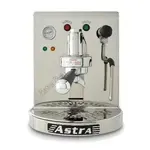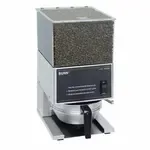
Espresso Under a Microscope: What Actually Happens at 9 Bars of Pressure
- The Fundamentals: How to Make Espresso Properly
- Why 9 Bars? The Sweet Spot of Espresso Pressure
- How Espresso Pressure Interacts With the Coffee Puck
- Commercial Espresso Machines vs Consumer Models
- How Pressure Changes Flavor During Espresso Brewing
- Pre-Infusion: The Gentle Start That Improves Extraction
- How to Brew Espresso With Perfect Pressure
- What Equipment Improves Espresso Extraction Consistency?
Espresso isn’t just coffee—it’s a science. Every shot represents a precise interaction between heat, pressure, grind size, water flow, and resistance inside the coffee puck. While baristas master the craft through repetition, café owners and culinary professionals benefit from understanding the deeper mechanics behind what makes exceptional espresso possible.
At the center of this process is one powerful number: 9 bars of espresso pressure. For decades, 9 bars has been the gold standard used by commercial espresso machines worldwide. But why 9? And what exactly happens inside the portafilter when water meets finely ground coffee at such extreme force?
Today, we’re breaking down the science of espresso—what happens at high pressure, how extraction works, why consistency matters, and how to choose equipment that supports your café’s workflow.
The Fundamentals: How to Make Espresso Properly
Before diving into pressure and extraction science, let’s quickly revisit the core steps of how to make espresso the right way. Quality starts with a controlled process:
- Grind Fine and Even – Espresso requires a fine grind to create resistance inside the portafilter.
- Dose Correctly – Most commercial baskets hold 18–20g for a double shot.
- Tamp Evenly – A level, firm tamp ensures uniform water flow.
- Preheat the Machine – Stable temperature is essential for balanced flavor.
- Lock, Brew, Time – Aim for 25–30 seconds of extraction.
These steps lay the foundation for understanding the mechanics of espresso extraction at pressure.
What Happens During Espresso Extraction?
When water hits the puck at high pressure, three key processes occur simultaneously:
1. Soluble Extraction
Hot pressurized water dissolves compounds in the coffee:
- acids
- sugars
- oils
- aromatic molecules
- bitter compounds
Proper extraction balances all of these elements into a sweet, rounded shot.
2. Emulsion Formation
Espresso is partly an emulsion. Pressure forces oils out of the coffee cell walls, giving espresso body and richness.
3. Crema Production
Crema forms when pressurized CO₂ in the coffee rapidly expands upon release. It’s a visual indicator of freshness and proper espresso brewing pressure.
When these processes work together, you get a balanced, aromatic, full-bodied shot of espresso.
Why 9 Bars? The Sweet Spot of Espresso Pressure
It’s common to see consumer machines advertise 15 or even 20 bars, but professional baristas know that 9 bar espresso is the proven industry standard.
Here’s why:
✔ 9 bars provides optimal flow rate
Water needs enough pressure to pass through compacted fine coffee. Less pressure = weak, slow extraction. More pressure = overextraction and channeling.
✔ 9 bars prevents channeling
High pressure finds the weakest point in the puck.
Too much pressure blows channels through the coffee, leading to watery, uneven shots.
✔ 9 bars extracts oils effectively
These oils are what make espresso “espresso”—not drip coffee.
✔ Most espresso brewing techniques are designed around 9 bars
Portafilter baskets, pump systems, pre-infusion profiles, and even roast curves are calibrated around this standard.
This balance makes 9 bars the best pressure for espresso consistency and flavor extraction.
Understanding Espresso Extraction Time
One of the most important variables in any espresso extraction guide is timing.
Target espresso extraction time:
25–30 seconds for a double shot.
This allows the hot water to dissolve flavor compounds at an ideal rate. Extraction time is influenced by:
- grind size
- tamp pressure
- coffee freshness
- portafilter basket size
- machine temperature
- and—most importantly—espresso machine pressure
If your shot pulls too fast or too slow, adjusting grind is the first step. But inconsistent pressure can sabotage even a perfect grind.
How Espresso Pressure Interacts With the Coffee Puck
When brewing begins, water meets three zones inside the puck:
1. The top layer (highest pressure zone)
This area absorbs the full force of pressure. If tamp is uneven, channeling starts here.
2. Middle density zone
This is where most extraction takes place. Uniform grind is essential.
3. Bottom layer (exit zone)
Water slows slightly as it reaches the bottom, allowing final oils and solubles to dissolve.
A good machine ensures consistent pressure across these layers, while a poor machine creates uneven results.
Commercial Espresso Machines vs Consumer Models
Most home machines advertise “15-bar pumps,” but this refers to pump capability.
Professional machines regulate pressure down to 9 bars because that’s where espresso extraction works best.
Commercial machines offer:
- precise pump regulation
- stable temperature
- pre-infusion capability
- uniform water dispersion
- consistent flow rate shot after shot
For café owners, these factors directly impact consistency and customer satisfaction.
How Pressure Changes Flavor During Espresso Brewing
Too little pressure (under 7 bars):
- sour
- weak
- thin body
- pale crema
- fast flowing shot
Too much pressure (over 10 bars):
- bitter
- harsh
- hollow
- uneven extraction
- dark crema with quick collapse
Maintaining the correct espresso brewing pressure ensures a balanced profile and repeatable results.
Pre-Infusion: The Gentle Start That Improves Extraction
Modern machines use pre-infusion—a brief low-pressure phase before full pressure—to allow water to saturate the puck slowly.
Benefits of pre-infusion:
- reduces channeling
- improves evenness
- enhances sweetness
- produces thicker crema
This is why many high-end commercial machines advertise “soft pre-infusion” or “low-pressure bloom.”
How to Brew Espresso With Perfect Pressure
To master how to make espresso consistently, follow these checklist steps:
1. Grind Fresh and Dial In Daily
Coffee changes daily after roasting. Adjust grind accordingly.
2. Verify Espresso Machine Pressure
Your pump pressure gauge should show ~9 bars during brewing.
3. Maintain Stable Temperature
Commercial machines use PID technology for +/- 1°F accuracy.
4. Follow Proper Extraction Time
25–30 seconds. Under 25 = sour; over 30 = bitter.
5. Tamp Evenly
Uneven tamping = uneven extraction.
6. Use Fresh Coffee
Old beans lose CO₂ and produce weak crema.
What Equipment Improves Espresso Extraction Consistency?
🚀 1. Commercial Espresso Machines
Look for:
- 9-bar pressure regulation
- PID temperature control
- rotary pumps
- pre-infusion
- dual boilers
💧 2. Commercial Grinders
High-quality burr grinders ensure uniform particle size and prevent channeling.
🧊 3. Water Filtration Systems
Mineral balance affects both flavor and machine longevity.
🌡 4. Precision Scales & Timers
Essential for maintaining ratio + timing consistency.
Final Thoughts
Understanding how espresso extraction, pressure, timing, and equipment all interact is the key to delivering café-quality espresso shot after shot. Whether you're dialing in for service or training new baristas, mastering the principles behind 9 bar espresso empowers your team to serve consistently exceptional coffee.
The perfect shot isn’t just art—it’s engineering, chemistry, and precision. And with the right commercial espresso machine and brewing techniques, your café can execute that perfection hundreds of times a day.




